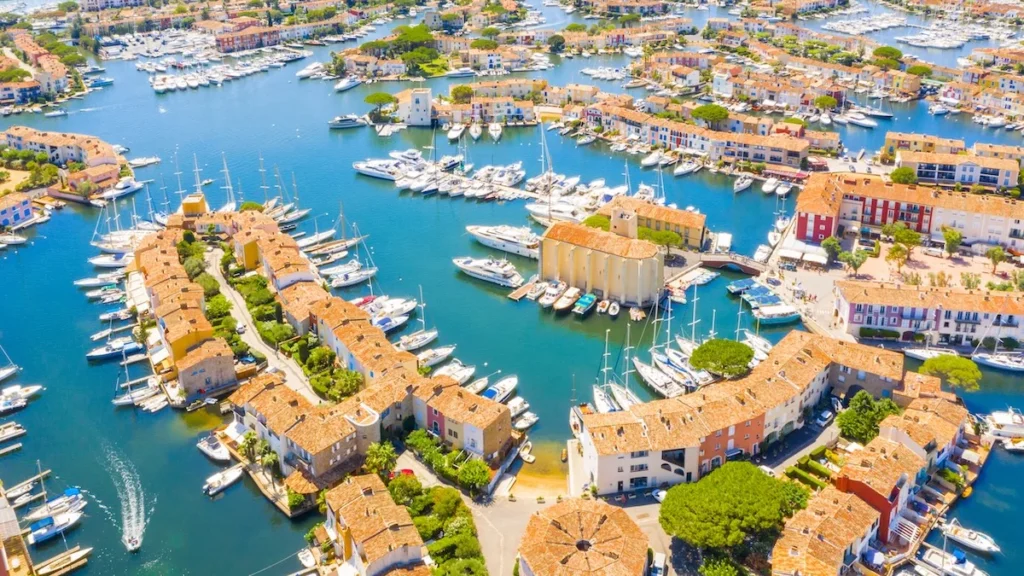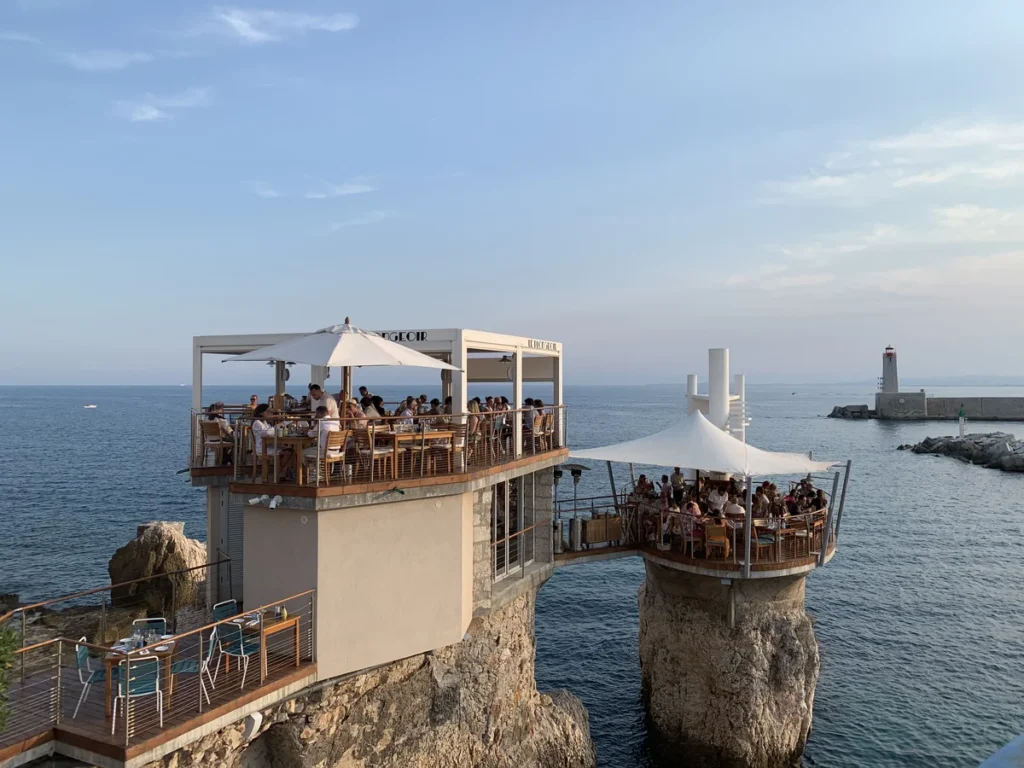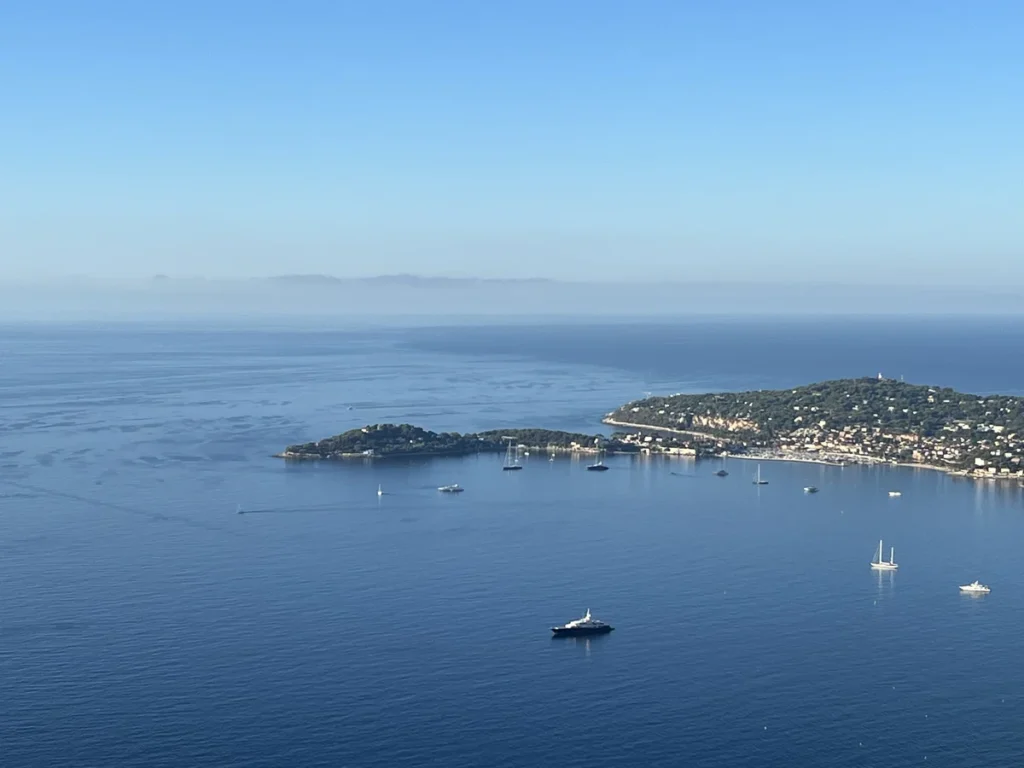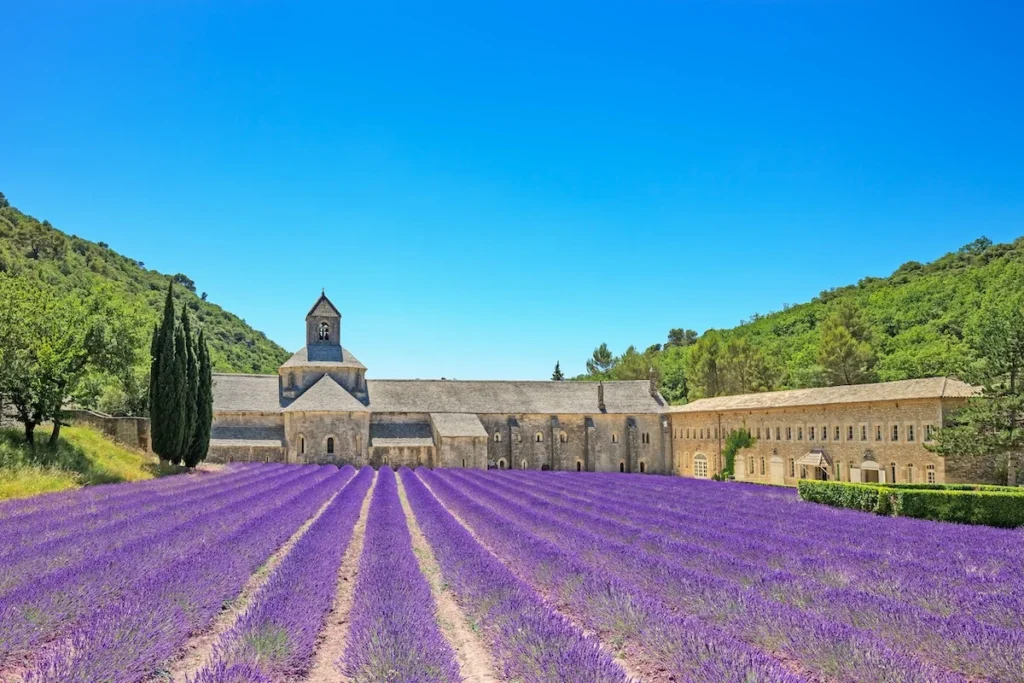From the mega-yacht marinas of the Côte d’Azur to the rustic villages of Provence, the South of France blends old-world charm with modern luxury. It is a place that has welcomed and fascinated me for over a quarter of a century.
As I start to plan for a summer holiday on the Riviera , I thought it may be useful to get those names right, and explore a little more of this inspirational place and try to unlock the allure of the South of France.
Table of Contents
Whilst locations like Saint Tropez and Cannes grab the headlines, they are just part of the alluring cocktail that makes up the South of France. Whilst we’re let’s unlock the key subregions, and some overlapping names. Is the Cote D’Azur different to the Riviera?And where does Provence sit in all of this?
What’s the difference between the South of France, and the Cote D’Azur?
The south of France is the southern part of France including the coastal city of Marseilles, and ancient towns like Carcasonne, and all the way to the Italian border near Menton. The Cote D’azur is also known as the Riviera and stretches from Saint Tropez to the Italian border.
What is the difference between the Cote D’Azur and the French Riviera?
Nothing! They are one and the same thing. ‘Riviera’ means coastal regions. The name Côte d’Azur poetically translates to “Azure Coast”. It was the French poet Stéphen Liégeard that gave us this name in 1888,
The Key Destinations in the South of France
Ancient & Modern in the South of France – Marseilles and Carcassonne
The self-proclaimed “oldest city in France” Marseilles was once an ancient Greek port, now a bustling city on the Mediterranean coast complete with expensive hotels and great restaurants. Netflix has a great two season series with Gerard Depardieu that beautifully showcases the city amidst political scheming!
Further West is the ancient town of Carcassonne. About an hour’s drive inland from the Mediterranean coastal city of Narbonne, Carcassonne is perched dramatically on a hilltop overlooking the Aude river valley below, Famed for its remarkably well-preserved medieval citadel fortified with 3km of ramparts and 53 watchtowers. Beyond its castle-like aesthetics and atmosphere, 21st century Carcassonne also radiates southern French charm with outdoor cafés, shops and winding cobblestone streets.
The Glittering Côte d’Azur: Playground for Coastal Royalty
What we’d call the Riviera broadly starts at Saint Tropez, heading East along the coast towards Italy. Once a tiny fishing village Saint Tropez is now short hand for luxury and sophistication in the South of France. It is also the setting for one of the most famous French films ‘And god Created Woman’ launching Brigit Bardot as a global star.
Continuing East Port Grimaud’s yacht-lined canals resemble Venice on the French coast. Beautiful towns and villages dot the coast as we head towards Cannes. Saint Maxime, Saint Aygulf (where I had my first ever holiday in the South of France), and Saint Raphaelle dot the coast, with Fréjus sitting inland as we head East.

Iconic Cannes
With its stretch of exclusive beach resorts, luxury hotels, and extravagant harbour Cannes is the most iconic of all places on the Riviera. From the iconic Carlton Hotel, along the wide Crosiette, to the old town of the old port quarter, Le Suquet, Cannes is a great place to visit. Over the years I have seen it change a lot, losing much if its uniqueness but it’s still worth a visit.
Opulence continues along Cap d’Antibes with the imposing Hotel du Cap-Eden Roc and medieval ‘Old Town’. Mentioned in F. Scott Fitzgerald’s Tender is the Night, this area includes majestic Belle Epoque hotels. The town Juan-les-Pins hosts a lively jazz festival each summer nearby.
Along the Bay of Angels, Nice earns the nickname ‘Queen of the Riviera’ for its iconic Negresco Hotel, Promenade des Anglais, and charming old town lanes. This has become my goto holiday destination for its mix of city vibrancy, beach life, great shopping and restaurants. Its immediacy to the major airport adds a convenient factor making it the ideal long weekend destination.

Cap Ferrat (Saint Jean Cap-Ferrat) is another coastal peninsula poking out between Nice and Èze sur Mer, replete with the incredible Villa Ephrussi de Rothschild.

Away from the seaside allure, delightful hill towns beckon visitors inland just a few miles too. Perched high above Nice, the medieval stone village Èze with tiny crooked lanes, vestiges of an ancient castle, and perfect views across the sea from its exotic botanical garden or from Les Ramparts at the gorgeous Chateau de la Chèvre D’Or.
The walled town Vence perched between Cannes and Nice also charms with winding cobblestone alleyways while housing exceptional modern art museums. Neighbouring Saint-Paul de Vence offers celebrated art history too, from its former resident Marc Chagall, and hosts galleries and boutiques lined up tempting travellers strolling its impressive 16th-century ramparts peering down across olive groves and the countryside below. The famous Colombe D’Or restaurants, with its priceless art collection is worth a lunch or dinner if you can get in.
Back down the cost are the towns of Villefranche, home to the famous The famous Rolling Stones Villa Nellecote, and Beaulieu Sur Mer. Both home to gorgeous streets and beaches.
Last along the Côte d’Azur comes Menton, its pastel houses clustered near the Italian border.
Rustic Provence
Provence also qualifies as the South of France but not the Riviera. Whilst you can get some glorious views of the sea, we are a little way from coast,
Provence unspools its own brand of simple pleasures with winding country roads through vineyard hills and vibrant outdoor markets at small towns. You can imagine Cary Grant strolling through these markets in To Catch a Thief.
The elegant tree-lined boulevards and stately architecture of 18th century mansions in Aix-en-Provence reflect its history as regional capital and exude refinement to this day. It is also the setting for a charming TV series called Murder in Provence.
Avignon provides a glimpse into the 14th century when it served as the papal seat, the imposing stone palace still standing watch behind turreted walls. The remarkably preserved 1st century Roman arena in Arles continues hosting bullfights today for passionate crowds. And the hill villages of Gordes and Roussillon charm visitors with winding cobblestone lanes perfect to get lost wondering between art galleries and cafés before taking in the sublime sunset views across the countryside.
Each season also transforms Provence, whether the dazzling purple haze of lavender flowers carpeting fields or vibrant yellow swaths of sunflowers welcoming autumn. Country inns and wines invite guests to unwind and imagine simpler times.

Much like the coastal appeal of sleek yachts and champagne drawing visitors to the privileged towns along the Côte d’Azur, the inland villages and gastronomy of Provence also entrance visitors in their own profound way through vibrant epicurean traditions still very much thriving after centuries here.
Woven together across olive groves and ancient ruins, blue coastlines and blushing vineyards, contemporary sophistication and old-world aesthetics create a landscapes that has cemented Southern France as one of the most alluring destinations in Europe and inspired artists for generations. The azure dazzle of the Côte d’Azur and pastoral charms of Provence mingle in a captivating invitation to indulge the senses, immerse in culture, and understand why me and millions of others continue to be drawn here. Each region offers its own profound allures before blending in seamless fashion across the South of France.
